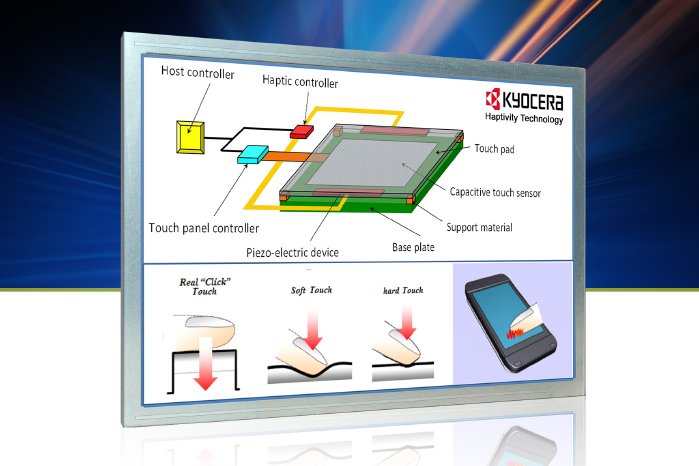The operating safety of display systems can be increased significantly with Haptivity technology, because the touch of a button is not only registered visually, but also a mechanical feedback of the Human Machine Interface (HMI) system occurs. The new touch feeling technology is interesting for a broad range of applications such as industrial and consumer equipment or in the automotive industry.
With Kyocera’s Haptivity technology, the Pacini nerve in the finger is being stimulated to create the feeling in the brain of having pressed a real mechanical button. The impression of having pressed a real button is composed of the combination of various pressure feelings in the finger. If a specific, programmable trigger value of the pressure is exceeded when pressing the virtual button, the touched surface starts to vibrate, whereby the second phase of the switching process is simulated.
The pressure detection and the resulting vibration inducement of the surface create the feeling of pushing a button or an increment wheel, etc., although the actual mechanical movement only occurs in the micrometer range. Various touch effects can be created and controlled by corresponding programming of the device software. As a result, the design of a wide range of individual display systems is possible.
The first products with Kyocera’s patented touch feeling technology will be presented over the course of this year.
Please visit MSC Technologies at embedded world 2016 in Hall 2, Booth 240.
About Avnet
From components to cloud and design to disposal, Avnet, Inc. (NYSE:AVT) accelerates the success of customers who build, sell and use technology globally by providing them with a comprehensive portfolio of innovative products, services and solutions. Avnet is a Fortune 500 company with revenues of $27.9 billion for the fiscal year 2015. For more information, visit www.avnet.com


